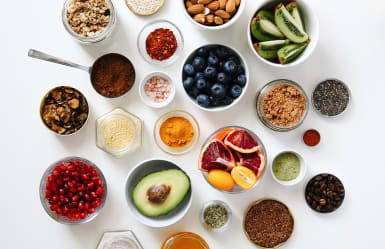That’s the premise behind the famous “36 questions that lead to love,” an experiment popularized by a viral essay and inspired by real psychological research on how intimacy forms. Today, people are bringing the quiz with them on first dates, and marriage therapists assign the activity to couples looking to emotionally reconnect. Here’s how the 36 questions work and the science behind them. The experiment became massively popular after the New York Times Modern Love column published an essay by Mandy Len Catron in 2015 about her experience trying the questions with an acquaintance whom she went on to marry. In 1997, the team published a paper in the 1Personality and Social Psychology Bulletin1 describing a series of experiments in which they asked pairs of strangers (or, in one version of the experiment, pairs of college classmates) to take turns asking each other each of the 36 questions. At the end of the experiment, the pairs were asked to spend four uninterrupted minutes staring into each other’s eyes. “One key pattern associated with the development of a close relationship among peers is sustained, escalating, reciprocal, personalistic self-disclosure,” the Arons and their fellow researchers write in the paper. “The core of the method we developed was to structure such self-disclosure between strangers.” The questions are designed to help two people gradually reveal more and more about themselves, as well as identify ways in which they’re similar to each other and say the things they like about each other out loud. This combination of self-disclosure, perceived similarities, and being open to getting close to each other is what’s been found to accelerate the creation of feelings of closeness and intimacy. That said, as Elaine Aron notes in a Psychology Today blog post, the questions weren’t specifically designed to help people fall in love—they’re simply about creating closeness. The questions have been used in many other psychology studies, from helping married couples get closer to each other to helping people reduce racial prejudice. They may or may not “fall in love,” but the Arons’ research has shown they are effective at creating intimacy. “We should also emphasize that the goal of our procedure was to develop a temporary feeling of closeness, not an actual ongoing relationship,” the researchers write in the paper. They conclude, “Are we producing real closeness? Yes and no. We think that the closeness produced in these studies is experienced as similar in many important ways to felt closeness in naturally occurring relationships that develop over time. On the other hand, it seems unlikely that the procedure produces loyalty, dependence, commitment, or other relationship aspects that might take longer to develop.” Catron, the writer behind the viral Times essay, went on to marry the man she did the experiment with. Another pair from one of the Arons’ original experiments with the question set also got married, and the entire research team attended the wedding. “I wish I had statistics on couples that have resulted from it, but I know of at least a few where the people contacted me directly,” Daniel Jones, editor of the Modern Love column at the Times, said in a 2016 WBUR podcast episode about the essay. Here’s how the 36 questions worked out for other people who’ve since tried the experiment: With her warm, playful approach to coaching and facilitation, Kelly creates refreshingly candid spaces for processing and healing challenges around dating, sexuality, identity, body image, and relationships. She’s particularly enthusiastic about helping softhearted women get re-energized around the dating experience and find joy in the process of connecting with others. She believes relationships should be easy—and that, with room for self-reflection and the right toolkit, they can be. You can stay in the loop about her latest programs, gatherings, and other projects through her newsletter: kellygonsalves.com/newsletter




